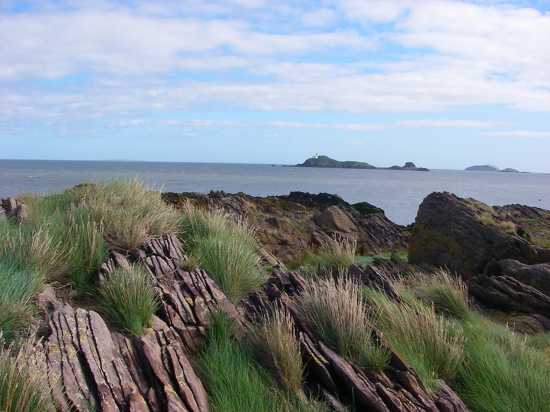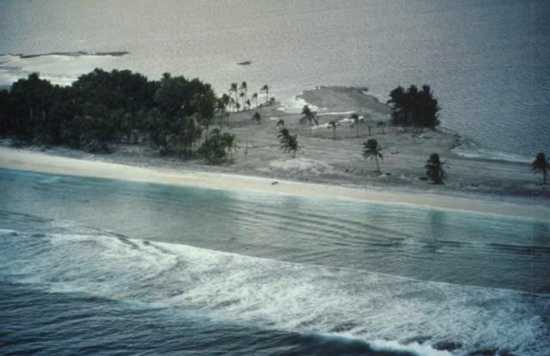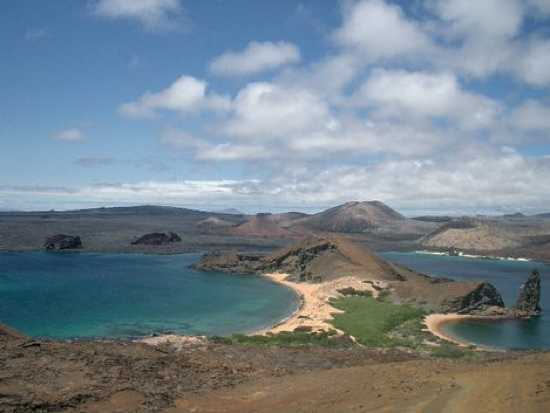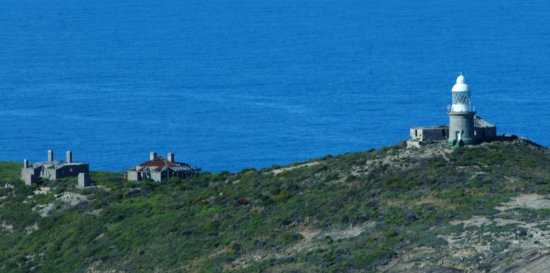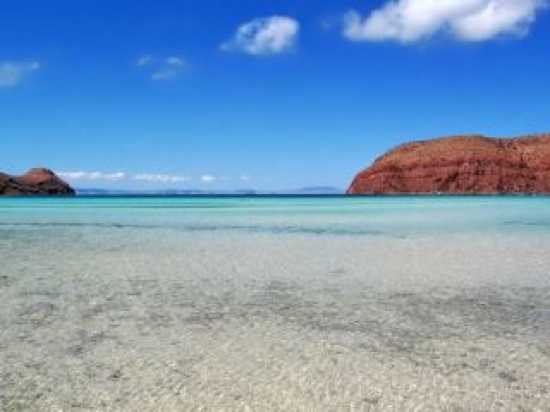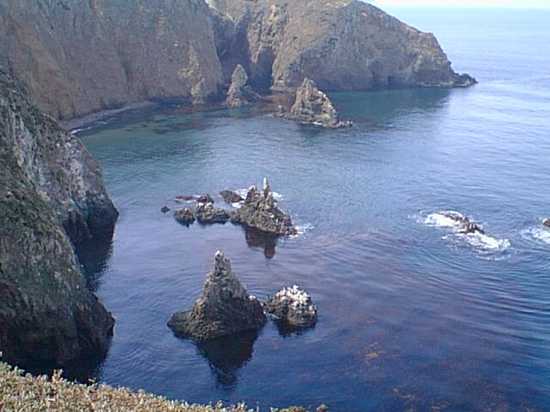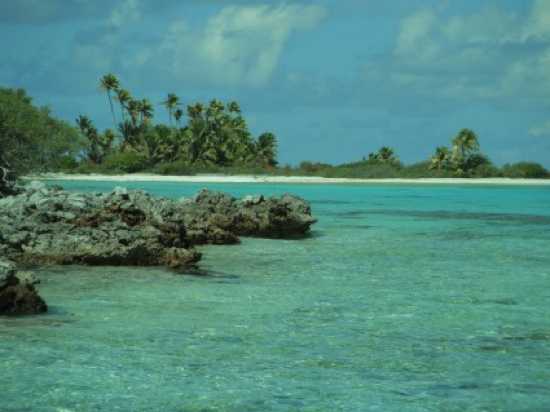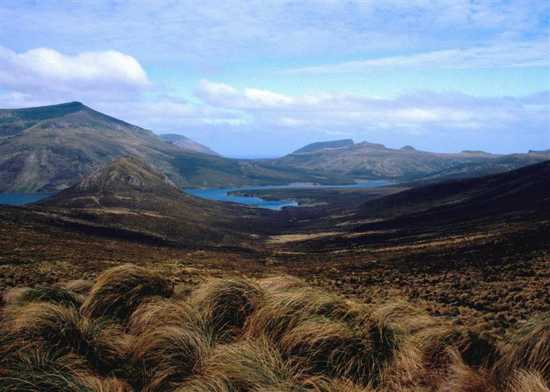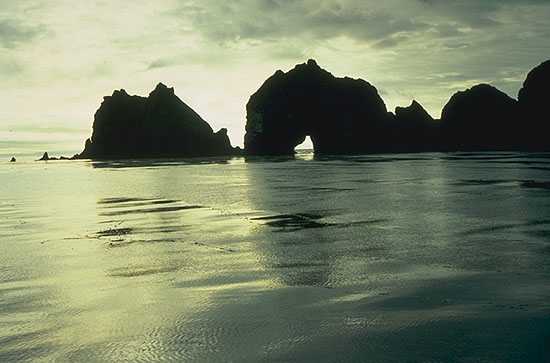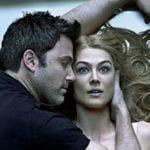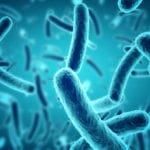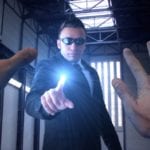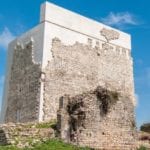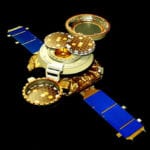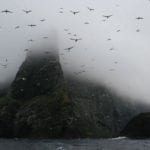But it was what came with the people to these islands that really decimated native species. Cows, goats, pigs, sheep, dogs, cats, rabbits, ferrets, stoats, weasels, fox, and worst of all, rats. Arriving on islands where most of their prey had no defenses against these new marauders, the native island species of birds, mammals, insects, and reptiles were doomed. Not only could they not fight back, in most cases they were unafraid of these interlopers. Most of all, the rats cleaned house. One by one, native island species vanished, killed off by the introduced predators directly or by loss of habitat. Only in the last few decades has man begun a concerted battle to retake these islands from the invasive species, and save what remains of the island native animals. Their efforts came too late to save many wonderful animals such as the San Roque white-footed mouse and the Stephens Island wren. Most of the following stories of successful island eradication projects come from the fantastic book “Rat Island” by William Stolzenburg. Here are ten stories of man trying to restore the wildlife of the world’s islands through eradication of invasive species.
Usually, the threat to native island species is in the form of an animal such as rats, sheep, or cats. But on the islands of Fidra and Craigleith in Scotland’s Firth of Forth there is a different invasive species threatening the internationally important breeding grounds of rare and protected seabirds such as the puffin. An invasive plant called tree mallow (Lavatera arbor), is a tall plant of Mediterranean origin that was introduced to the area in the seventeenth century and subsequently spread to Craigleith and Fidra. The plant now covers large stretches of the islands in dense growth that makes it difficult for the puffins to come ashore and dig burrows for nests. Because of this, puffin populations on the island of Craigleith had dropped from 28,000 in 1999 to only 12,000 in 2003. Rabbits are usually an invasive island species that harms native species, but in this case, the absence of rabbits on the islands (the rabbits were killed off by a disease outbreak) meant the tree mallow was no longer being controlled (eaten) by the rabbits. In 2006 a five-year project to control the tree mallow and restore the breeding populations of these seabirds was launched. Volunteers removed the tree mallow plant by hand, clearing large expanses of the islands, to the extent that, it is now hoped, they have broken the flowering and seed cycle of the tree mallow. This will allow native grasses to reestablish and allow the puffins to breed in larger numbers once again.
About 800 miles out to sea off Acapulco Mexico sits tiny Clipperton Island. Only about a mile square, sailors had been stopping by Clipperton since at least the 1700s. They found a desolate island with almost no trees but millions of crabs and many bird species including boobies. Over the next few hundred years various people tried to settle Clipperton, all failed. They left, but their pigs stayed. The pigs lived off the crabs and bird eggs. By the late 1950s almost all the crabs and boobies were gone. A man named Ken Stager had come to count the wildlife on Clipperton and brought with him a shotgun to shoot some birds for a museum. Instead, seeing what the pigs were doing to the birds, he decided to use the shotgun to kill every last pig. When he was done, 58 pigs had been shot. Today Clipperton is back with hundreds of thousands of boobies and even more crabs.
No more sacred island ground in the world exists for biologists and naturalists than the Galapagos Islands. The Galapagos Islands are where Charles Darwin finalized his theory of evolution as he studied the island’s unique wildlife – each island species more specialized than the next. Across this natural history paradise ran one of man’s four-legged beast of destruction – goats. All previous attempts to rid islands of invasive goats had failed because no matter how many men came with guns, some goats always climbed higher and eluded the hunt, only to repopulate the island. Then along came an Aussie, Karl Campbell who came up with a new strategy of using goat against goat. As many goats that could be shot were killed, and then to lure out the remaining still in hiding, Campbell used super sexed female goats. Called Judas Goats, these females would be radio collared and sent out to lure the hiding males out into the open. The massive attack of hunters, dogs and helicopters killed every last goat, an estimated 160,000, on the islands of Santiago and Isabela. This was the largest island eradication of invasive goats in history.
The kakapo is a large, flightless parrot native to New Zealand. Isolated on the island, cut off from predators other than raptors, the kakapo evolved into a forest bird of up to nine pounds and three feet tall. It was killed off by islanders, dogs, stouts, and most of all, by native mice and then-introduced non-native rats. Soon only a handful of birds remained. They needed a safe refuge for the last survivors to have any hope of replenishing their numbers. In the race to save the kakapo conservationists and scientists needed to find an island free of rats and far enough away from other landmasses that the rats could not swim the distance. One early possibility was the island of Breaksea in Fiordland, New Zealand. It was over 400 acres of steep, wooded terrain and home to untold millions of brown rats. But two men, Rowley Taylor and Bruce Thomas thought they could find a way to rid Breaksea Island of the rats. The so-called experts said they were mad and it could not be done, but Taylor and Thomas believed in their abilities and the ability of a new type of rat poison only then becoming available. Brodifacoum was a far more powerful anticoagulant-type rat killer than its predecessor, warfarin. It killed rats the same way as warfarin, by making their blood fail to clot, but it was hundreds of times more powerful so only one gram was needed to kill even large rats. And it would kill all rats that ate it; none would survive, reproduce, and create new generations of rats impervious to the poison (as was already happening to warfarin). Taylor and Thomas first practiced on the smaller island of Hawea. They scouted every foot trail left by rats and spread bait stations every forty meters. The brodifacoum bait worked, the rats took it and all of them died. They had succeeded in clearing an entire island (though much smaller and easier than Breaksea) of rats. Even though they had been successful ridding Hawea Island of rats, their superiors in the government did not believe they could repeat this success on an island as large and rugged as Breaksea. They gave Taylor and Thomas only three weeks. Once again, they scouted all the rat trails and prepared their bait stations. Once the rats were accustomed to the new bait stations (744 of them placed everywhere on the island), they filled them with the brodifacoum. In twenty days they had killed every rat on Breaksea Island. They returned after one month, still no rats. Kiwi audacity had done it. A large island in New Zealand waters had been made free of rats. By 1990 more than 40 New Zealand islands had been cleared of rats using the same methods.
There are more than 250 islands in the coastal waters off Baja, the Pacific Ocean to the west and the Sea of Cortez to the east. Desolate and mostly uninhabited by people, each island had its own picture of evolution as Darwin saw it, pockets of unique species of birds, mammals, insects, and lizards found nowhere else. Unlike the better-known Galapagos Islands, however, these islands were also overrun by the usual suspects – rats, rabbits, goats, burros and cats. Nineteen native species had already been pushed over the edge into extinction since man first arrived. Two men, Bernie Tushy and Don Croll decided they could do to the Baja islands what Taylor and Thomas had done at the other end of the world. With the brodifacoum they had the weapon they needed to take on the island rats. The cats were another issue. For that canny predator they needed a man who knew how to trap them, a man by the name of Bill Wood. Wood had honed his cat trapping skills on bobcats and was enlisted by Tushy and Croll to help them rid the island of feral cats. Initially reluctant, Wood soon found ridding islands of these destructive species his life-calling. Two young guns – Brad Keitt and Josh Dolan soon joined them. Together with other US and Mexican volunteers they became Island Conservation and Ecology Group. Within five years, the group had removed invaders from nine islands including all rats from San Roque Island and Rasa islands, all rabbits from Natividad Island, and goats and burros from San Benito islands. They rid seven islands of all of their cats. In the process, they protected an estimated 88 species unique to the Baja islands.
Anacapa are three lengths of rock making up Channel Islands National Park off the coast of California in the Pacific Ocean. Rugged and isolated, they would make a perfect refuge for all kinds of animals, especially sea birds. Then came man, and the rats. The rats decimated the population of Xantus’s murrelet, a small seabird as well as grasshoppers, lizards and wildflowers. To save what was left, and rid the island of the rats, the United States government asked for help from their southern neighbors and the Island Conservation and Ecology Group. Down under, the New Zealanders had been clearing islands much bigger than Anacapa using helicopters to drop brodifacoum in huge quantities. But this was the United States with many environmental laws and animal activists groups such as People For the Ethical Treatment of Animals (PETA). Helicopters dropping tons of rat poison would not go over well in the USA. In addition, the island of Anacapa had one rodent no one wanted to kill, in fact, it needed protected, the Anacapa deer mouse. How could the conservationists kill off millions of rats yet not, in the process, push the Anacapa deer mouse in to the very extinction they were trying to prevent? And what of raptors who would eat the poisoned rats, how to protect them? Over years the plan took shape. The Anacapa deer mouse and raptors were caught, caged and moved to safety to be reintroduced to the island after the aerial assault. Helicopters were set to drop the brodifacoum on the island. Then the people got in the way. Animal activists sabotaged the operation and sued to stop it. After a lengthy court battle the judge allowed the eradicators to proceed. The helicopters dropped their deadly payload and soon Anacapa was free of rats, all of them killed. When it was deemed time, the Anacapa deer mice were released. Returning to check the island in following years scientists found no sign of the rats returning. Slowly the Xantus’s murrelets, clinging to survival, began to come back, as did native salamanders, lizards, grasshoppers and other wildlife.
Not all island eradication projects are huge, military-style undertakings. Some are small and carried out by just a few dedicated individuals. Once such success story was the Tahanea Atoll in the Tuamotu Archipelago of French Polynesia. There the goal was to rid the atoll of rats to save the endangered Tuamotu Sandpiper also known as the Titi. Once widely spread around the Tuamotu Archipelago, this small shorebird had been reduced to just four known colonies due to predation by invasive rats. Some dedicated people decided they wanted to take action and help the endangered Titi. But before they could kill the rats, the Titi on Tahanea Atoll had to be captured and protected. For three weeks, 18 of the precious birds were sheltered while the atoll was cleared of rats using poison. Today, the Titi have one home that is free of rats, Tahanea Atoll.
At forty-four square miles, Campbell Island was about to become the largest land mass island yet to be cleared of rats, thanks to the efforts of New Zealander Pete McClelland. Though by the early 2000s the process for eradicating rats from Pacific islands had been well established, Campbell Island – due to its size and remoteness (situated 440 miles from the nearest land in the South Ocean) – was going to take rat-killing logistics and strategy to a whole new level. McClelland spent five years planning for the invasion of Campbell Island as if it was a military campaign, and in many ways, it was. McClelland and his comrades would get only one try at eradicating the rats. If they failed, the rats were the victors. In June of 2001 the invasion of Campbell Island was launched and by mid July, with tons of brodifacoum dropped all over the island, it was estimated they had killed over two hundred thousand rats. Checking back in over the following years, no rats were found. Campbell Island was rat-free, the largest island up to that time eradicated of rats.
The Aleutian Islands in the Bering Sea of the North Pacific Ocean had once been the home of many unique species, until man arrived. Soon man dispatched the Steller’s sea cow, a much larger version of the manatee. Only 14 years from its discovery and naming, it was gone, hunted to extinction. Another Kiska Island species, the flightless spectacled cormorant, also went into the history book of extinction. Fur hunters pushed the sea otter and northern fur seal to the very brink of extinction, but the worst damage done by them was the introduction of the fox to the Aleutian Islands. Native to Alaska, the fox had not managed to inhabit most of the Aleutian Islands, until man gave them a lift across the Bering Strait. Once on the islands the fox did what they do best, eat everything in sight. Ground nesting ducks, sparrows, wren and the Aleutian honking goose, among many others, soon fell prey to the foxes. By the time the first American naturalist came to see what was left, he found almost all of the island’s native flora and fauna was in retreat or on the brink of extinction, if not already extinct. The foxes were eating the crabs, mussels, urchins, moss berries, birds and anything else they could catch. One of these islands was Kiska Island which has the distinction of being one of two islands (the other being Attu Island) in the Aleutian Island chain that were captured by the Japanese Imperial Army during World War II. For fifteen months the American and Japanese armies would fight for possession of these small and remote islands in the Bering Sea. On August 15, 1943, the massed American and Canadian armed forces were set for K-Day, the retaking of Kiska and Attu. However, unknown to the Allies, in the middle of the night and in secret, the Japanese removed all of their soldiers from the islands by submarine. When the Americans and Canadians made their final assault, the Japanese had vanished. The Japanese had left, but their rats remained. It was not the rat that would first be eradicated from the island of Kiska, but the fox. One of those American troops fell in love with this desolate, cold, windy yet beautiful part of the world and decided to stay. Robert Jones Jr., known as “Sea Otter” Jones. He first took stock of the islands and saw for himself what the previous American naturalist had seen, devastation of the native island species wherever there were foxes. Jones decided to act, to try to make the islands safe again. He would kill off all the foxes. He and his helpers spread deadly poison, set leg traps, and shot what they could with rifles. By 1960 Jones had his first success, the island of Amchika was free of the fox. But had Jones acted in time to save the Aleutian cackling goose? It appeared not, none could be found still alive. Then, on one of the most remote of all islands, a colony of the odd honking geese was discovered. By 1964 Jones set his sights on Kiska Island and again killed off all of the foxes. Wherever Jones did this, the island’s remaining wildlife returned, including the Aleutian cackling goose. It appeared man had turned the tide in the Aleutian Islands for native species. But underneath their feet, the rat had other plans.
With the fox now eradicated from Kiska Island, the rat population grew and grew. This was bad news for the least auklet; at only three ounces it was one of the smallest of seabirds. But what it lacked in size the least auklet made up for in staggering numbers. Huge colonies of the birds existed on Kiska Island, but as the rat population grew, it decimated the colony. The rats would kill dozens, sometimes hundreds of least auklets and carefully stack their bodies with only the brains and eyes eaten. Jones and his fellow conservationists, seeing the stacks of brainless and eyeless corpses, knew who their next enemy was – the rat. A second and harder battle had to be waged – they had to rid Kiska and other islands of the rats, or the least auklet and other bird species would become extinct in a matter of decades, perhaps less. As Jones said, the number of birds killed by rats on the Aleutian Islands far outnumbered deaths caused by the oil spill from the Exxon Valdez. Kiska Island was one hundred square miles situated in one of the most inhospitable, cold and wind swept locations on Earth. Simply getting there was a huge challenge, and hugely dangerous. It would require a fleet of ships and helicopters, hopping from island to island, gradually carrying the fuel, supplies, and rat poison with them every mile of the way. Wisely, the attackers decided to try a smaller island first before taking on huge Kiska Island. One island in the Aleutians all but screamed – “come kill me!” Though only a tenth the size of Kiska, Rat Island would still be the third largest rat eradication project in history, if they could pull it off. After four years of planning, on September 17, 2008 the rats on Rat Island had but a short time to live. Some of the best helicopter pilots in the world would drop brodifacoum from the air while those on the ground spread it by hand. Nothing was left to chance, the entire island was saturated in rat poison. This had the unintended and unfortunate side effect of killing many raptors that ate the masses of poisoned rats or the rat food itself. But the campaign was a success, all rats were eliminated from Rat Island, and the bird populations would rebound. Restoring island habitat on Rat Island was – and still is – the most ambitious project of its kind undertaken in the Northern Hemisphere.
